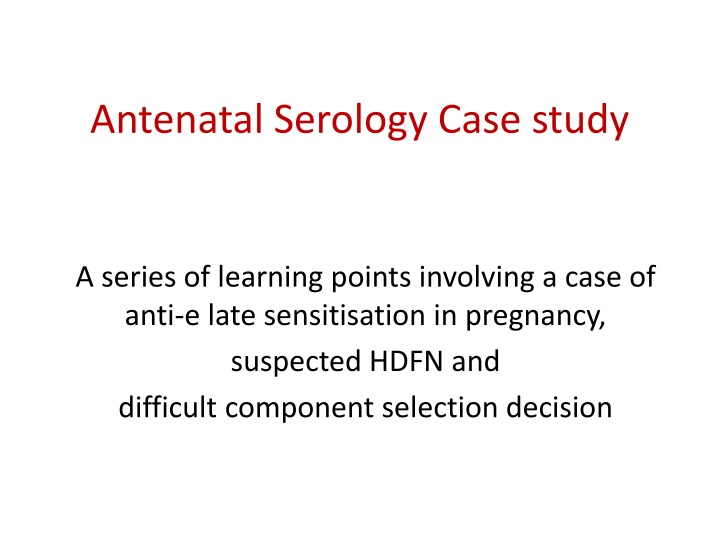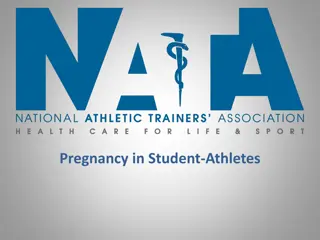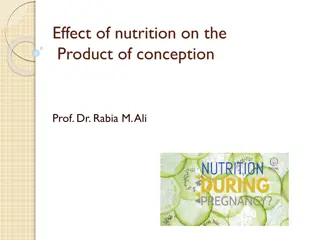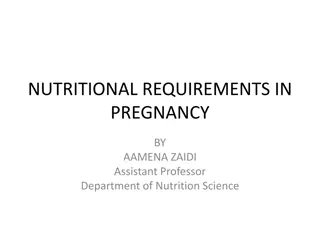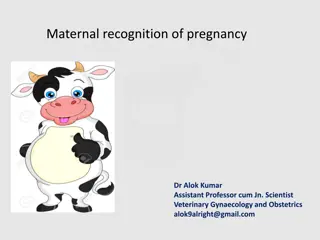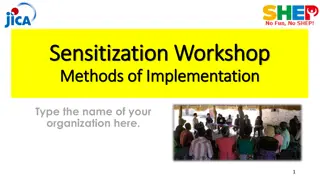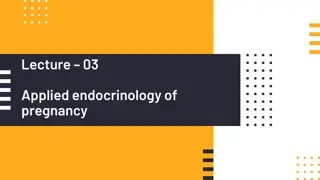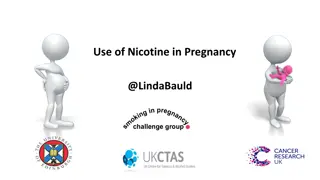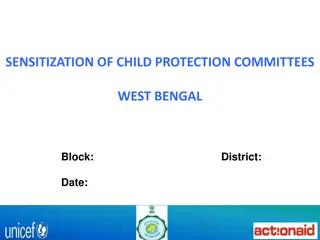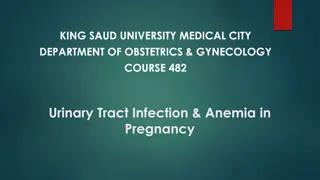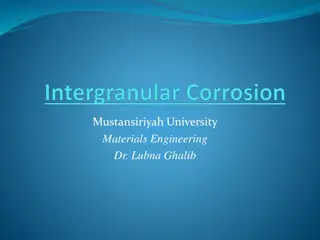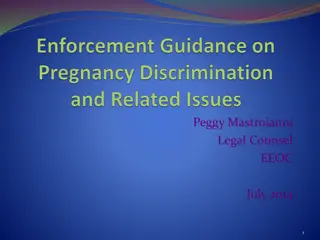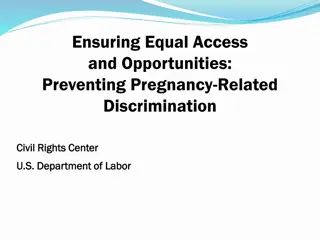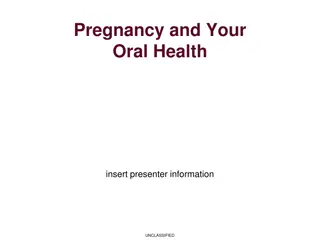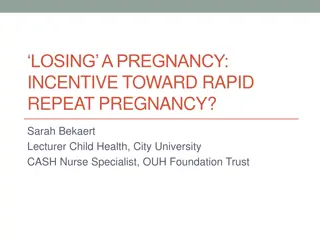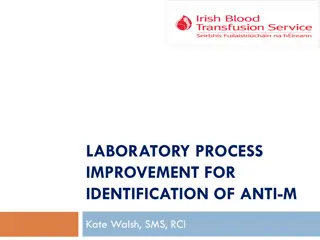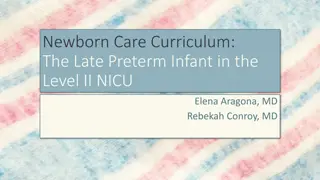Management of Anti-e Late Sensitization in Pregnancy: A Case Study
A detailed case study involving a pregnant patient with anti-e late sensitization, suspected HDFN, and challenging component selection decisions. The patient's history, serology results, obstetric background, and sequence of events leading to an urgent transfer of the infant to a specialized hospital are discussed. Key points include the detection of anti-e, titration studies, potential exchange transfusion considerations, and the management of the newborn's bilirubin levels. This case highlights the importance of thorough antenatal monitoring and collaboration between medical teams in managing potential hemolytic disease of the fetus and newborn (HDFN).
Download Presentation

Please find below an Image/Link to download the presentation.
The content on the website is provided AS IS for your information and personal use only. It may not be sold, licensed, or shared on other websites without obtaining consent from the author.If you encounter any issues during the download, it is possible that the publisher has removed the file from their server.
You are allowed to download the files provided on this website for personal or commercial use, subject to the condition that they are used lawfully. All files are the property of their respective owners.
The content on the website is provided AS IS for your information and personal use only. It may not be sold, licensed, or shared on other websites without obtaining consent from the author.
E N D
Presentation Transcript
Antenatal Serology Case study A series of learning points involving a case of anti-e late sensitisation in pregnancy, suspected HDFN and difficult component selection decision
Case Study Background Patient NB 40yr old antenatal patient 12thPregnancy with 8 live born infants Serology Results Group O RhD Positive Negative antibody screen at booking (16 weeks) and third trimester (28 weeks) No history of referrals to the IBTS RCI lab Transfusion History Two RCC units transfused as below following ERPC for miscarriage at 13/40 in July 2018. Blood loss was estimated as 0.5 L. Transfusion indication Hb 7.2g/dL and bleeding Phenotype of Units transfused were: O Pos, C+, c-, E-, e+, K- O Pos , C+, c+, E-, e+, K-
Patients Obstetric History Hospital Year Gestation Birth Outcome OLLD 2000 Term SVD A/W OLLD 2002 Term SVD A/W OLLD 2005 Term SVD A/W OLLD 2006 Term SVD A/W OLLD 2007 8/40 Complete Miscarriage Twin Pregnancy SVD OLLD 2008 Term A/W OLLD 2011 Term SVD A/W RHM 2014 Term SVD A/W RHM 2015 Term SVD A/W RHM 2018 13/40 Missed Miscarriage ERPC repeated Day 4 Sepsis & Haemorrhage 2 RCC transfused at RHM RHM 2019 9/40 Missed Miscarriage ERPC
Serology Results for Current Pregnancy Sample Date Gestation in weeks Result 9/10/2019 11 ORhD+ Ab screen negative 7/11/2019 15 ORhD+ Ab screen negative 28/2/2020 29 ORhD+ Ab screen negative 21/5/2020 41+3 ORhD+ C- c+ E+ e- K- Anti-e detected 30% red cell antibodies develop in second half of pregnancy Local policy in referring hospital is to test all antenatal patients at least twice in their pregnancy, regardless of RhD status. The course of this pregnancy had been uneventful. Pre-transfusion samples not routinely requested at the time of delivery. However due to the obstetric history of multiple pregnancies, a sample was receivedby the Blood Transfusion laboratory. Anti-e was detected Sample was referred to the IBTS for titration studies, anti-e titre was 4.
Sequence of Events Urgent transfer of Infant to Dublin Maternity Hospital. IBTS Registrar, Consultant and RCI MS on call notified. Baby is born in good health. Initial bilirubin indicated as normal. RCI receive sample Subsequent bilirubin sample reported as >300 mol/l Anti-e detected in referring hospital anti-e detected & Titration result of 4 reported Bilirubin result repeated in Dublin Maternity Hospital. Bilirubin reported as 31 mol/l Potential exchange transfusion Discussion on unit phenotype selection. On call team stood down. Infant transferred back to hospital of birth. Prophylactic triple phototherapy prescribed for the infant No requirement for exchange transfusion.
Jaundice and hyperbilirubinaemia Neonatal jaundice can be observed in over three quarters of full term newborns. Severe hyperbilirubinaemia is defined as bilirubin results of >342.1 mol/L. It occurs in <2% of full term newborns and may cause kernicterus and permanent neurodevelopmental delay. Phototherapy is usually effective in the treatment of hyperbilirubinaemia, but occasionally exchange transfusion is indicated. About 5% of infants will experience some degree of cardiorespiratory complications or metabolic disturbances post exchange transfusion
Exchange Transfusion Unit Selection Exchange transfusion is not a common procedure in Ireland. In fact, there has not been an exchange transfusion in Ireland in the last 12 months. The procedure involves the removal of the newborn s blood volume while simultaneously replacement with donor red cells that are crossmatch compatible with the mother. The benefit is that the levels of bilirubin are significantly reduced, along with haemolysed red blood cells and any red blood cells that are coated with an alloantibody. Current Irish Guidelines for exchange transfusion recommend the following criteria for exchange: Group O or ABO compatible with maternal and neonatal plasma, RhD negative. Antigen negative for maternal antibodies IAT crossmatch compatible with maternal plasma Less than 5 days old to ensure optimal red cell function and low potassium levels CMV negative
A Brief Revision of Rh Terminology Weiner Classification Fisher-Race Caucasian Population (%) R1R1 DCCee 19.5 R2R2 DccEE 2 R1r DCcee 35.6 R1R2 DCcEe 12.5 R0r Dccee 1.7 rr ddccee 15.1 r r ddccEe 0.43 r r ddccEE 0.002 *Table adapted from Makroo et al (2014)
Serology on infants sample Investigation performed Result Blood Group O RhD negative Rh/K phenotype C-c+E+e+K+ Antibody screen Anti-e (maternal origin) DAT 3+ with IgG Elute Anti-e Baby s probable phenotype is r r (0.43% frequency) r r unit would be required for exchange transfusion r r frequency in Caucasians is 0.002% (Makroo et al, 2014) IBTS would be unable to provide a r r unit for exchange transfusion. The mother s phenotype was previously ascribed as R2R2 r haplotype of infant was inherited from the father This profile will always be a challenge for transfusion in the future IBTS recommended transfusion protocol for exchange transfusion: D+ C-e-E+c+
Proposed Inheritance Mother: D+ C- E+ c+ e- R2r DcE/dcE Father (assumed): rr ddccee dce dcE Infant: dd C- E+ c+ e+ r r
Learning Outcomes Challenge Learning RhD+ mother assumed as R2R2 and RhD- new born Rhesus haplotypes are most likely probabilities only. Other possibilities should be considered such as R2r (DcE/dcE) Linking laboratory results with clinical presentation Haemolysis not expected Late developing antibody , characterised anti-e and clinically not jaundiced. Anti-e titre of 4. Component selection for exchange or neonatal transfusion D(-) anti-e detected (r r ) not a realistic option Realistic option is R2R2, respects antibody compatible and risk of D sensitisation accepted in neonate male gender. Would this change if the neonate was of female gender? The Grandmother Effect
Non-inherited Maternal Antigens (NIMAs) In 1954, Owens et al proposed that Non inherited maternal antigens (NIMAs) on the surface of red cells in RhD negative mothers may play a role in processes of tolerance or sensitization of offspring with respect to the RhD protein. They hypothesised that RhD- mothers were less likely to develop an alloantibody in response to her RhD+ fetus if her own mother were RhD+ than if she were RhD- (P = 0.01) This became known as the Grandmother Effect . Subsequent investigations by other teams (e.g. Ward et al, 1957; Mayeda,K, 1962) did not support these findings. However Schonewille et al revisited this idea in 2019, and found that the length of time RhD negative mothers had themselves been breastfed had a marked effect on their ability to develop alloantibodies. This may also account for the different study outcomes due to differences in breastfeeding timelines. NIMAs are more commonly discussed in relation to HLA, but this concept could apply to other proteins on the surfaces of any cells. Any maternal cells that may transfer to the fetus and establish a maternal microchimera may be responsible for tolerance or sensitization. In this case study, this may be the e antigen.
Discussion Point In this case study, the infant was a male. What if the infant was female? Previous studies: Li et al in 2010 described a case where least incompatible units were given to a male infant born with severe jaundice and hydrops who was affected by the mother s anti-Rh17. mother s group was B RhDNull with anti-Rh17 father was O RhD+ C + c E e + (They were also first degree cousins!!!). The baby s predicted phenotype was ORhD+ C+c E e+ (R1), presumably DCe/D Xmatch with Red cells D + C c + E + e (R2) phenotype had the weakest reaction with the neonate's serum. Positive outcome achieved with no long term neurological effects observed in the infant.
Sincere thanks to Carol Cantwell and her team in Mullingar for their help in gathering information for this case study. Also thanks for Edel Scally, Dr Kieran Morris and the medical team in the IBTS for their valuable input.
References Xia H, Ke SC, Qian RR, Lin JG, Li Y, Zhang X. Comparison between abdominal ultrasound and nuclear magnetic resonance imaging detection of placenta accreta in the second and third trimester of pregnancy. Medicine (Baltimore). 2020;99(2):e17908. O Riordan, JM, Fitzgerald, J, Smith, OP, Bonnar, J and Gorman, WA. Transfusion of Blood Components to infants under 4 months: Review and Guidelines. Irish Medical Journal Supplement (2007); 100(6): 1-24. Muchowski, Karen. Neonatal Hyperbilirubinemia. American Family Physician (2014); 89(11): 873-8. Bujandric N, Grujic J. Exchange Transfusion for Severe Neonatal Hyperbilirubinemia: 17 Years' Experience from Vojvodina, Serbia. Indian J Hematol Blood Transfus. 2016;32(2):208-214. Makroo R, Gupta R, Bhatia A, Rosamma NL. Rh phenotype, allele and haplotype frequencies among 51,857 blood donors in North India. Blood Transfus. 2014;12(1):36-39. Brunker, PAR. Chimerism in transfusion medicine: The grandmother effect revisited. Landes Biosciences. 2013, 4(4): 119-125. Schonewille H, van Rood JJ, Verduin EP, et al. Exposure to non-inherited maternal antigens by breastfeeding affects antibody responsiveness. Haematologica. 2019;104(2):263-268. Li BJ, Jiang YJ, Yuan F, Ye HX. Exchange transfusion of least incompatible blood for severe hemolytic disease of the newborn due to anti-Rh17. Transfus Med. 2010;20(1):66-69.
